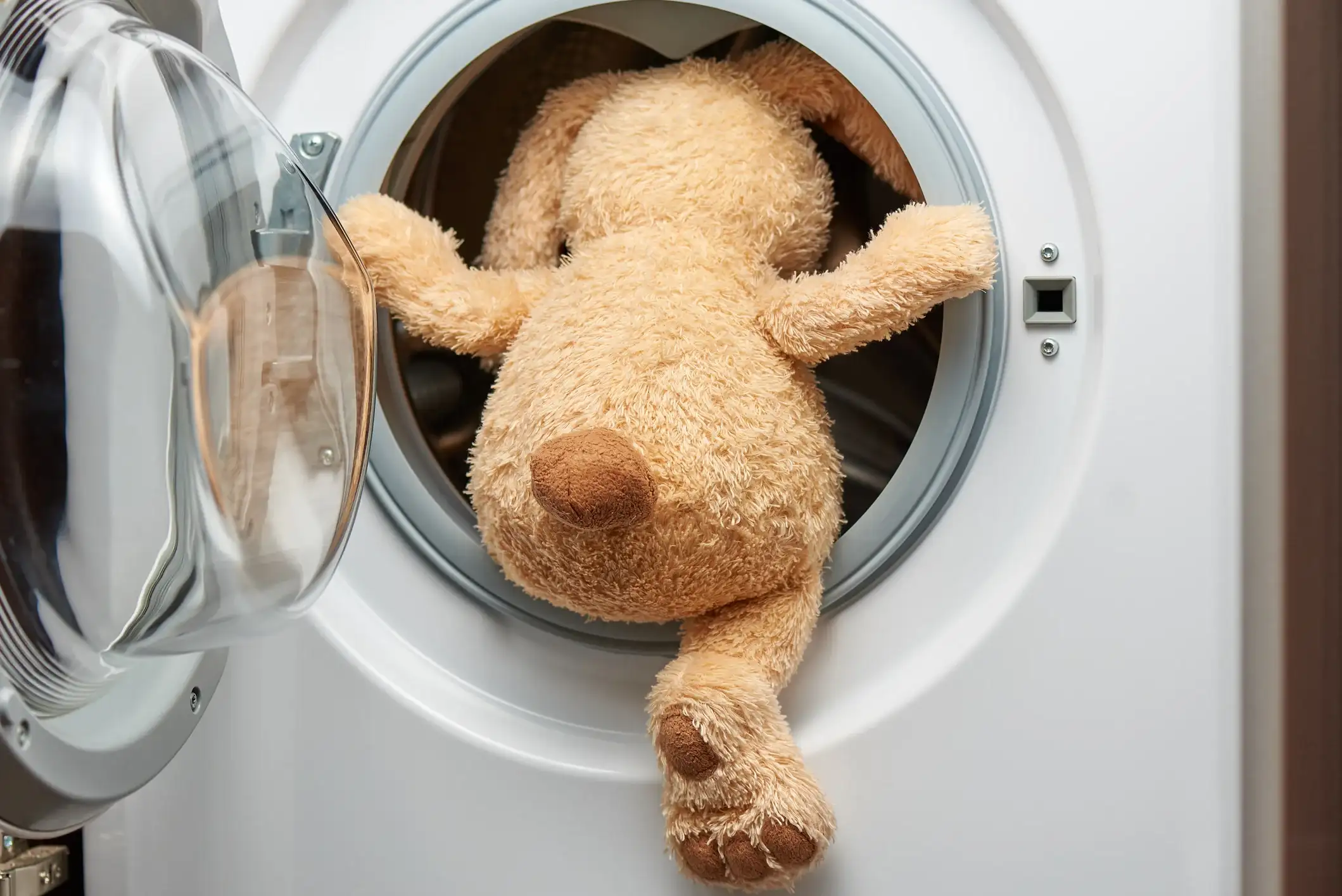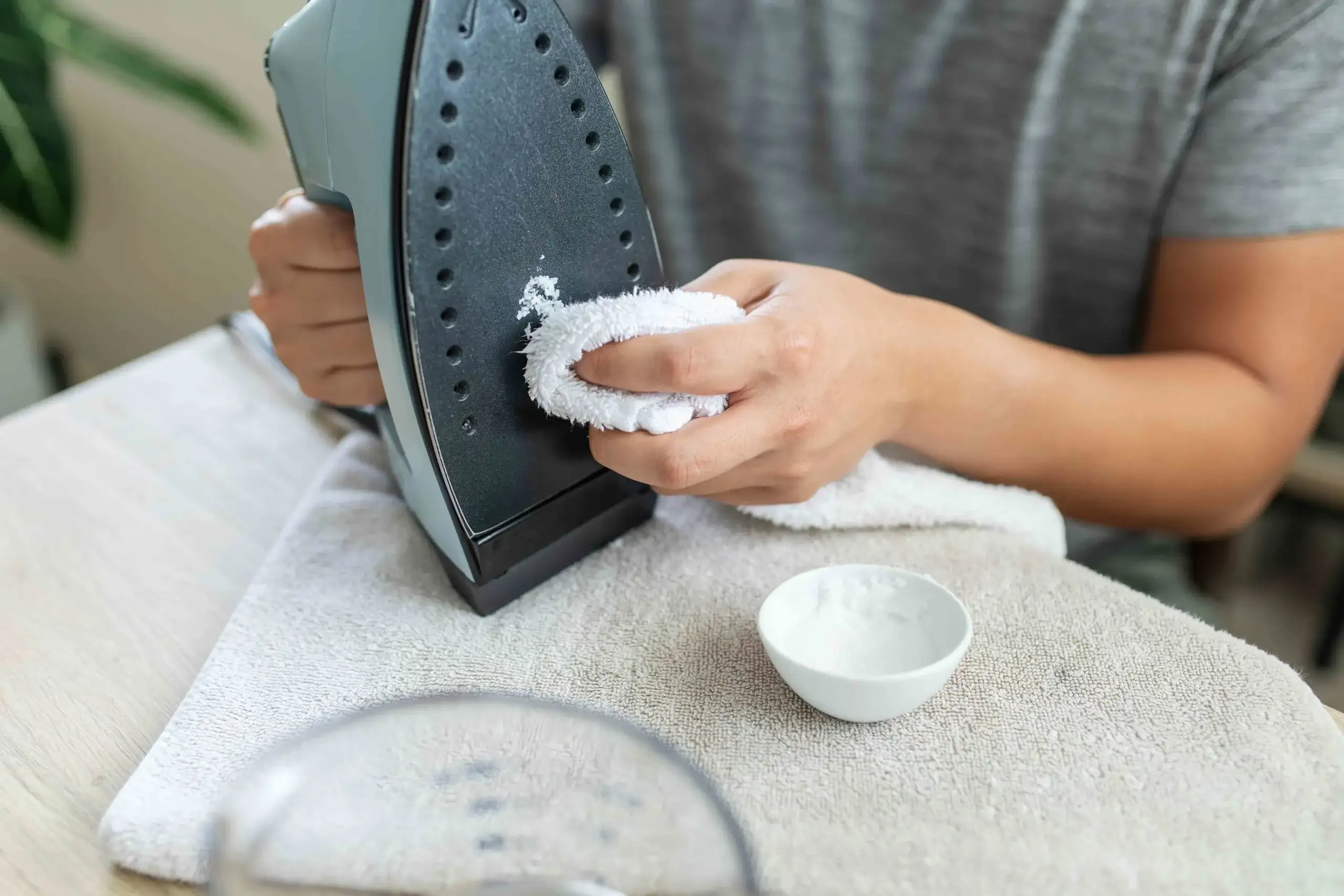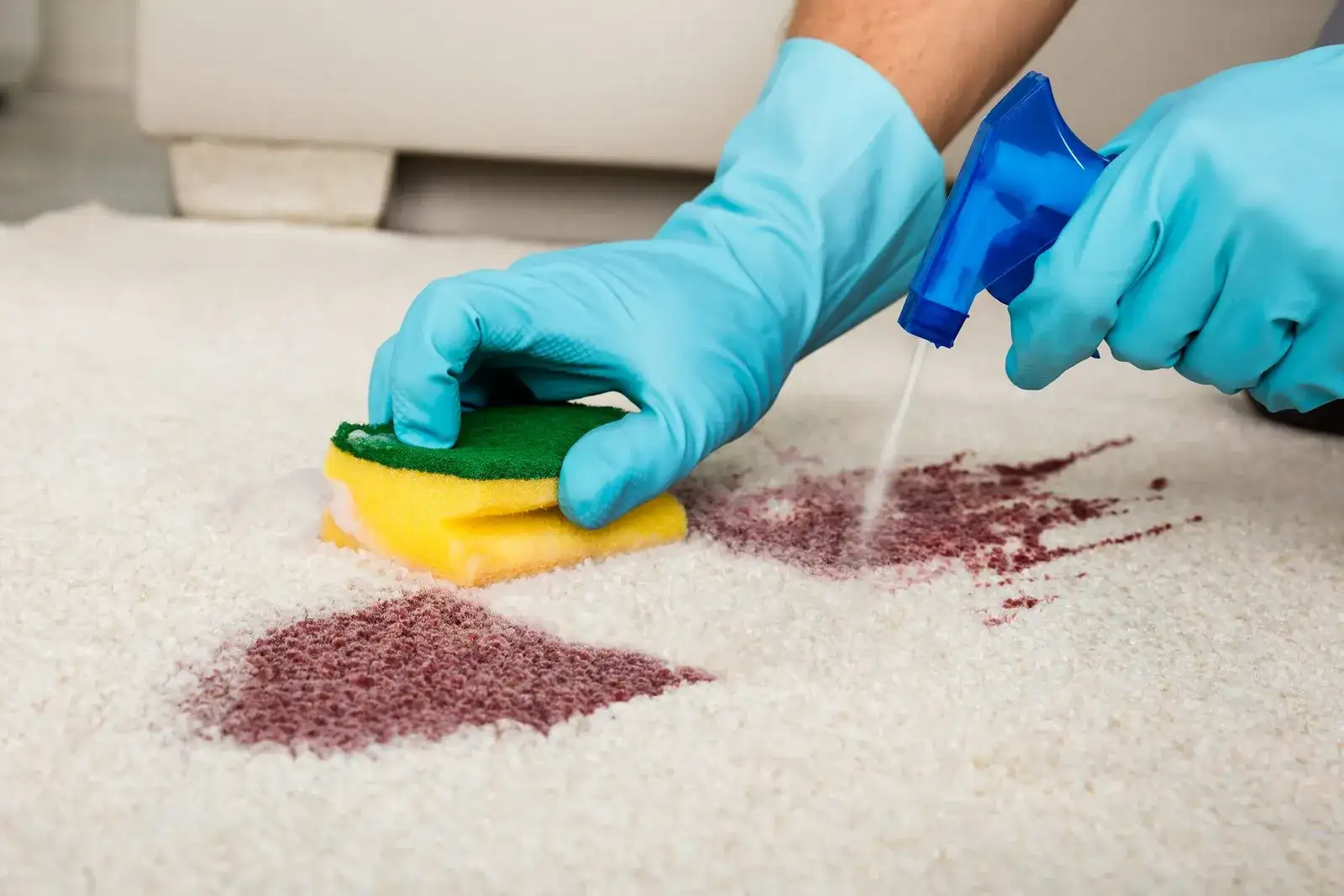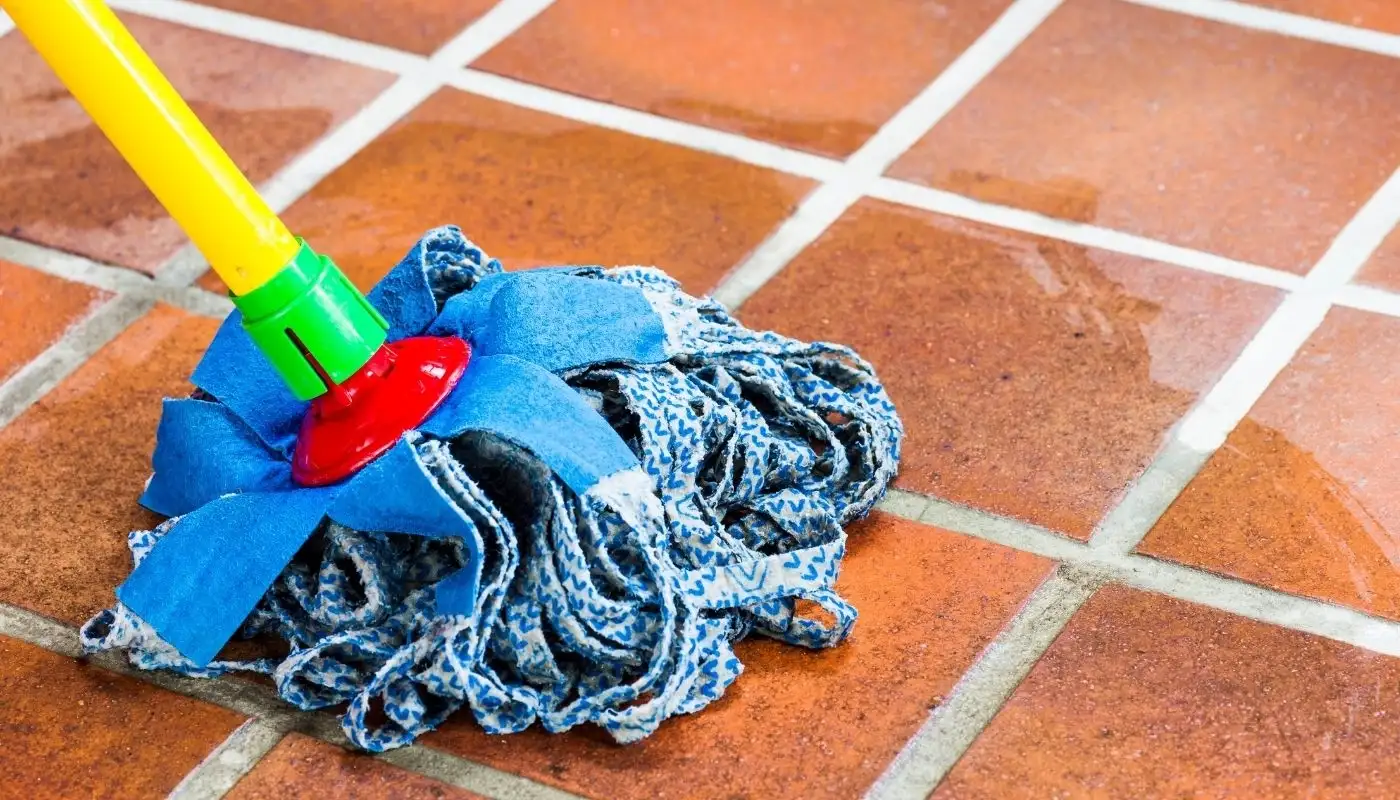Is your child's beloved stuffed animal looking a little worse for wear? Over time, stuffed animals can accumulate dirt, germs, and odors from being cuddled and played with. While you might be hesitant to wash such a cherished toy, proper cleaning can help extend its life and ensure it remains a safe and hygienic companion. In this guide, we'll provide step-by-step instructions on how to safely wash a stuffed animal in a washing machine, so you can rest assured that your little one's favorite friend is clean and fresh.
How to Clean a Teddy Bear in a Washing Machine
Before you start:
- Check the care label: Always consult the care label on the bear to ensure it's safe to machine wash. Some materials or fillings might be delicate or require special cleaning methods.
- Remove detachable parts: If the bear has any removable parts like eyes, nose, or accessories, take them off before washing.
- Check for stains or odors: Identify any specific stains or odors that might require pre-treatment.
Washing instructions:
- Choose a gentle detergent: Opt for a mild laundry detergent that's suitable for delicate fabrics. Avoid using bleach or fabric softeners, as they can damage the bear's materials.
- Wash in a delicate cycle: Use a gentle or delicate cycle on your washing machine. This will help prevent the bear from getting damaged or losing its shape.
- Wash with like colors: To avoid color bleeding, wash the bear with items of similar colors.
- Use a mesh laundry bag: Enclose the bear in a mesh laundry bag to protect its fur and prevent it from getting caught in the washing machine's agitator.
- Dry on low heat: After washing, remove the bear from the laundry bag and tumble dry it on low heat. This will help the bear dry evenly and prevent it from shrinking or becoming misshapen.
- Air dry: For added care, you can air dry the bear. Hang it outdoors in the shade or lay it flat to dry completely.
Additional tips:
- Pre-treat stains: If there are any stubborn stains, pre-treat them with a stain remover before washing.
- For strong odors: If the bear has a particularly strong odor, consider adding baking soda to the wash cycle. Baking soda can help neutralize odors.
- Stuffing replacement: If the stuffing inside the bear becomes clumped or damaged, you can carefully replace it. Use a clean, hypoallergenic stuffing material.
- Professional cleaning: For extremely delicate or valuable bears, consider taking them to a professional cleaner who specializes in stuffed toys.
By following these steps, you can effectively clean your beloved bear in a washing machine while preserving its quality and appearance.
How To Clean A Teddy Bear By Hand
Handwashing a teddy bear is a gentle and effective way to clean it, especially if it's delicate or has specific stains. Here's how to do it:
Materials:
- Mild detergent
- Warm water
- Soft cloth or sponge
- Basin or sink
Instructions:
- Remove detachable parts: If the bear has any removable parts like eyes, nose, or buttons, take them off before washing.
- Check for stains: Identify any specific stains or areas that need more attention.
- Fill a basin with warm water: Fill a basin or sink with warm water.
- Add detergent: Add a small amount of mild detergent to the water.
- Create a soapy solution: Mix the detergent and water to create a soapy solution.
- Submerge the bear: Gently submerge the bear in the soapy solution.
- Handwash: Use a soft cloth or sponge to gently scrub the bear. Pay particular attention to stained areas.
- Rinse thoroughly: Rinse the bear thoroughly under running warm water to remove all the soap.
- Squeeze excess water: Gently squeeze out the excess water from the bear. Avoid wringing or twisting, as this can damage its fur.
- Air dry: Lay the bear flat on a clean towel or hang it outdoors in the shade to air dry completely. Avoid direct sunlight, as this can cause the colors to fade.
Safety Precautions When Washing a Teddy Bear
- Check the care label: Always read the care label on the teddy bear before washing. Some materials or fillings may require special cleaning methods or may not be machine-washable.
- Remove detachable parts: Take off any detachable parts like eyes, nose, or accessories to prevent them from getting lost or damaged during the washing process.
- Choose the right detergent: Use a mild, fragrance-free detergent that is specifically designed for delicate fabrics. Avoid using bleach or fabric softeners, as these can damage the bear's fur and stuffing.
- Wash in cold water: Wash the teddy bear in cold water to prevent colors from running and to protect the delicate fibers.
- Use a gentle cycle: Select a gentle or delicate cycle on your washing machine to minimize wear and tear on the bear.
- Use a mesh laundry bag: Place the teddy bear in a mesh laundry bag to protect it from getting tangled or damaged in the washing machine.
- Air dry: Allow the teddy bear to air dry completely. Avoid using a dryer, as the heat can damage the stuffing and cause the bear to shrink.
- Check for damage: After washing, carefully inspect the teddy bear for any signs of damage, such as loose stitching or frayed fabric.
- Do not wash electronic bears: If the teddy bear has any electronic components, do not wash it in a machine. Instead, spot clean it with a damp cloth.
How To Care For A Vintage Or Antique Teddy Bear
Vintage and antique teddy bears are cherished collectibles that require special care to preserve their value and condition. Here are some essential tips:
Handling and Display
- Handle with care: Always handle your vintage teddy bear gently to avoid damaging the fur, stuffing, or seams.
- Avoid direct sunlight: Prolonged exposure to sunlight can cause the bear's colors to fade. Display it in a shaded area or use UV-protective glass.
- Keep away from heat sources: Excessive heat can damage the bear's materials. Avoid placing it near radiators, fireplaces, or other heat sources.
- Protect from dust: Cover the bear with a dust cover when not on display to prevent dust accumulation.
Cleaning and Maintenance
- Avoid washing: Unless absolutely necessary, avoid washing vintage or antique teddy bears. Washing can damage the fur, stuffing, and overall condition.
- Spot clean: For minor stains or dirt, use a soft, damp cloth to gently spot clean the bear. Avoid rubbing or scrubbing.
- Check for loose stitching: Regularly inspect the bear for loose stitching and repair it promptly to prevent further damage.
- Protect from pests: Keep the bear away from pests like moths and insects. Store it in a sealed container or use mothballs.
- Professional restoration: If the bear requires extensive restoration, consider consulting a professional who specializes in vintage toy restoration.
Storage
- Store in a cool, dry place: Store the bear in a cool, dry environment to prevent mold and mildew growth.
- Avoid plastic bags: Do not store the bear in plastic bags, as this can trap moisture and lead to damage.
- Use acid-free tissue paper: If storing the bear for an extended period, wrap it in acid-free tissue paper to protect it from moisture and discoloration.
By following these guidelines, you can help preserve the value and beauty of your vintage or antique teddy bear for generations to come.
How To Repair A Teddy Bear
Repairing a teddy bear can be a rewarding DIY project. Here are some common repairs and how to tackle them:
Fixing Loose Stitching
- Gather your tools: You'll need a needle and thread that matches the bear's fur.
- Secure the loose thread: Tie a knot at the end of the thread and thread it through the needle.
- Stitch the tear: Carefully stitch the torn area, ensuring the stitches are even and secure.
- Tie off the thread: Tie a knot to secure the thread and clip off any excess.
Replacing Stuffing
- Cut open the bear: Carefully cut open a seam on the bear's back or bottom.
- Remove the old stuffing: Gently remove the old stuffing.
- Insert new stuffing: Fill the bear with clean, hypoallergenic stuffing material.
- Sew the seam closed: Carefully sew the seam closed using matching thread.
Fixing a Broken Ear or Arm
- Gather your materials: You'll need a needle, thread, and a small piece of fabric that matches the bear's fur.
- Create a patch: Cut a small patch of fabric that will cover the damaged area.
- Attach the patch: Place the patch over the damaged area and stitch it securely in place.
Repairing a Damaged Nose or Eyes
- Consult a professional: If the nose or eyes are severely damaged, it's best to consult a professional toy repairer.
- Use a similar material: If the damage is minor, try to find a similar material to replace the damaged part.
- Secure the new part: Carefully attach the new part using glue or thread, ensuring it is securely in place.
Tips for Repairing a Teddy Bear
- Use matching materials: Always use materials that match the bear's fur, stuffing, and overall appearance.
- Be patient: Repairing a teddy bear can be time-consuming, so be patient and take your time.
- Handle with care: Be gentle when handling the bear to avoid further damage.
- Consider professional help: If you're unsure about how to repair a particular part of the bear, it's best to consult a professional.
By following these steps and taking your time, you can give your beloved teddy bear a new lease on life.
How Often To Clean A Teddy Bear
The frequency of cleaning a teddy bear depends on several factors:
- Usage: If the bear is frequently played with or cuddled, it will need more frequent cleaning.
- Environment: A bear kept in a dusty or dirty environment will require more frequent cleaning.
- Stains or odors: If the bear develops stains or odors, it should be cleaned promptly.
General cleaning guidelines:
- Weekly inspection: Inspect the bear weekly for any visible dirt, stains, or odors.
- Spot clean as needed: If you notice any stains or dirt, spot clean them with a damp cloth and mild detergent.
- Deep clean every few months: For a thorough cleaning, hand wash the bear in cool water with a mild detergent.
- Air dry: Allow the bear to air dry completely before returning it to your child.
If the bear has been exposed to germs or bacteria, such as after being sick or lying on a dirty surface, it should be cleaned immediately.





